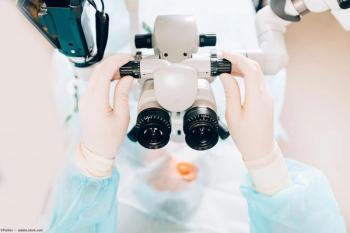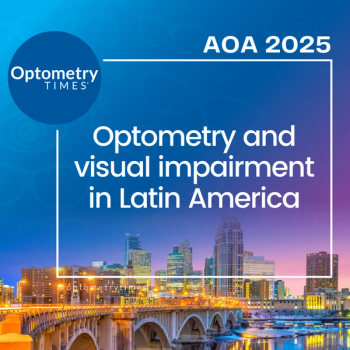
- July digital edition 2020
- Volume 12
- Issue 07
Light versus wellness: a modern dilemma
ODs should keep top of mind the science and application of visible and imperceptible light
In a sense, ODs should be light managers. While ODs and consumers alike are saturated with information on blue light protection, how many ODs can properly advise patients about choosing appropriate task and room lighting, properly selecting light bulbs, or prescribing therapeutic lighting? Not to mention tints for migraine, photopic epilepsy, congenital color vision deficiency, and solutions for traumatic brain injury patients. How many ODs appreciate circadian rhythm optimization, photo-biomodulation for age-related macular degeneration (AMD), or simply know how to set the correct color temperature of televisions? There isn’t a Common Procedural Technology (CPT) code or course on this subject matter in optometry schools.
Light management is ODs’ responsibility. See Table 1 to review essential terminology.
Efficiency and urbanization matter
These days, buying light bulbs is difficult even for optometrists. General Electric recently exited the Edison incandescent light business.1 There has been a near demise of the 100-watt light bulb in Europe since 2009, globally in 2014, but recently resurrected by the U.S. government.2
For a century, the short life-span incandescent lightbulb provided a charming, flattering, sleep-inducing, hospitable, and healthy light for consumers. Unlike the 1000-hour tungsten bulb, light-emitting diodes (LEDs) are up to 95 percent more efficient with a 50,000-hour life, high lumen/watt output and are mercury free. However, LEDs emit a narow, harsh spectrum of light that is typically opposite of tungsten bulbs, emitting meager long wavelength red and no infrared (IR).
All light intimately affects biological tissue. Sunlight is 40 percent red and IR, mimicked by the warm filamentous glow of candlelight, or a tungsten incandescent light bulb with or without the argon gas of the energy-efficient halogen version.
Prescribe light bulbs
A physicist’s dose of radiation is not a biologist’s dose of radiation. That is, in complex biological systems, there is a balance between cellular damage and repair. Moreover, in biological systems, short-term exposure risk may be very different from long-term chronic effects.
LEDs represent an improvement over fluorescents in bulb life efficiency, color rendering index, and safety. For example, the mercury resonance of fluorescents has been reported to cause biologic stress in susceptible populations, such as individuals with migraine, epilepsy, vertigo, chronic fatigue, and even mercury amalgam fillings. Fluorescent “mal-illumination” is also implicated in promotion of diabetes, cancer, and hormonal toxicities from basic science and animal studies.3-5
As populations increasingly shift to urbanized environments and 24/7 indoor technocracies, natural light is being displaced by artificial light with 93 percent of human endeavors now occurring indoors.4 Blue dominant light sources such as cool fluorescents and blue LEDs affect people by:3,4
– Disrupting human and animal circadian rhythms
– Promoting biological stress from high-energy free radicals
– Lacking the repair/rejuvenation spectrum of red/IR light
Natural sunlight and photo-biomodulation
Even though ultraviolet (UV) and IR are imperceptible, they are not unimportant. Photo-biomodulation therapy is a form of light therapy that utilizes non-ionizing light sources, including lasers, LEDs, and/or broadband light, in the near UV (>400nm), visible (400-700 nm) and near-infrared (700-1100 nm) electromagnetic spectrum.
It has been drilled into ODs that the human lens and retina are vulnerable to dangers from excessive blue and UV light as high energy photons induce cataract and macular degeneration. This is because non-ionizing UVA and UVB light in sunlight are photochemically active. On the other hand, early morning, natural light plays a role in awakening us by increasing cortisol, decreasing melatonin, and combating seasonal affective disorder.4,5
UVB rays found in natural sunlight are essential to dermal vitamin D production. UVA is underappreciated for its germicidal, hormonal, and cytochrome C mitochondrial adenosine triphosphate (ATP) cellular energy enhancement properties.3-5 Furthermore, humans evolved outdoors where the entire blood supply of the body passes through the retina every 2 hours where it is exposed to the full spectrum of ambient natural light.6
At the other end of the sunlight spectrum, IR is not merely “thermal waste and heat” but primes cells for repair and regeneration. Humans may not be able to see or even feel it, but near IR (700-1500 nm) in sunlight, incandescent lights, and security lights passes through clothing, penetrating deeply into large volumes of tissue. Rather than heating tissues, this radiation is considered restorative and is being used to treat AMD via commercial device Lumithera.7
Myopia and sunlight
As desirable as tungsten light is for night reading and health, to avoid disrupting circadian rhythm sleep cycles long wavelength light is suspected of inducing a myopic shift. An environment that deprives the eye of blue light stimulation from low color temperature tungsten bulbs, dim illumination, spectral filtering in tinted eyeglasses/contact lenses or reduced sunlight exposure tend to make the eye more vulnerable to myopia at low temporal flicker frequencies.8
I hope I have planted a seed in the sunshine for further inquiry. More information can be discovered via the references and through the Dinshah Health Society, the International Light Association, and the College of Syntonic Optometry.9-12
References:
1. Goldman D. GE is breaking up with the light bulb most iconic accomplishment. CNN Money. Available at https://money.cnn.com/2017/11/13/news/companies/ge-light-bulbs/index.html. Accessed 6/4/2020.
2. Schwartz J. White House to Relax Energy Efficiency Rules for Light Bulbs. NY Times. Available at https://www.nytimes.com/2019/09/04/climate/trump-light-bulb-rollback.html. Accessed 6/4/2020.
3. Ott JN. The Light Doctor with Dr. Alexander Wunsch. Decoding Superhuman. Available at https://www.youtube.com/watch?v=xtPWhwK4rAM. Accessed 6/4/2020.
4. Seiler B. Energy Saving Light Bulbs can make you ill! An interview with Alexander Wunsch. Facts are Facts. Available at https://www.facts-are-facts.com/article/energy-saving-light-bulbs-can-make-you-ill. Accessed 6/4/2020.
5. A non-profit organization dedicated to advancing non-pharmaceutical home color therapy. Dinshah Health Society. Available at http://www.dinshahhealth.org/. Accessed 6/4/2020.
6. Developing Photobiomodulation treatments for ocular diseases and disorders. Lumithera. Available at www.lumithera.com. Accessed 6/4/2020
8. Rucker F, Britton S, Spatcher M, Hanowsky S. Blue Light Protects Against Temporal Frequency Sensitive Refractive Changes. Invest Ophthalmol Vis Sci. 2015 Sep;56(10):6121-6131.
9. Liberman J. Light, Medicine of the Future: How We Can Use It to Heal Ourselves Now. Bear & Co. Rochester, VT; 2018.
10. Martel A. Light Therapies: a Complete Guide to the Healing Power of Light. Inner Traditions International, Rochester, VT; 2018.
11. International Light Association. Available at www.international-light-association.org. Accessed 6/4/2020.
12. College of Syntonic Optometry. Available at www.csovision.org. Accessed 6/4/2020.
Articles in this issue
over 4 years ago
How one OD encouraged glaucoma medication adherenceover 5 years ago
What to do if you're hit with tear gasover 5 years ago
July 2020: Best of Q&Aover 5 years ago
COVID-19 response brings new protocolsover 5 years ago
MITA Eyewear debuts stylesover 5 years ago
12 recommendations for prescribing opioidsover 5 years ago
3 steps to getting started with dry eye treatmentover 5 years ago
The dropless future: SLT as a first-line treatment for glaucomaover 5 years ago
Committed to safety: One OD’s COVID-19 responseNewsletter
Want more insights like this? Subscribe to Optometry Times and get clinical pearls and practice tips delivered straight to your inbox.













































.png)


